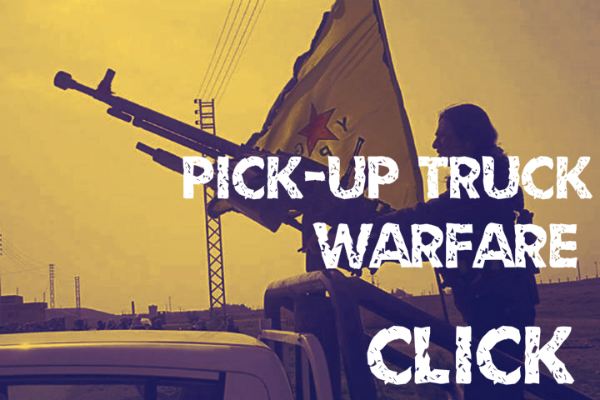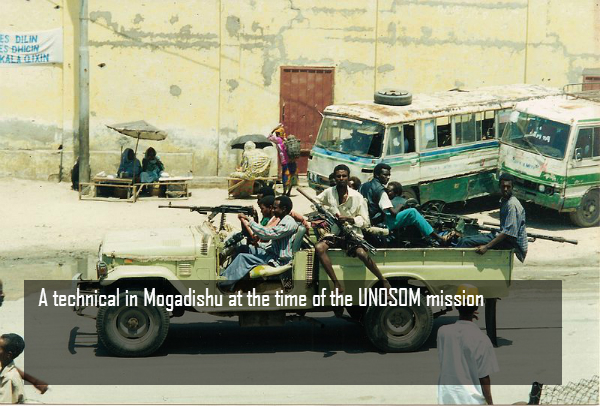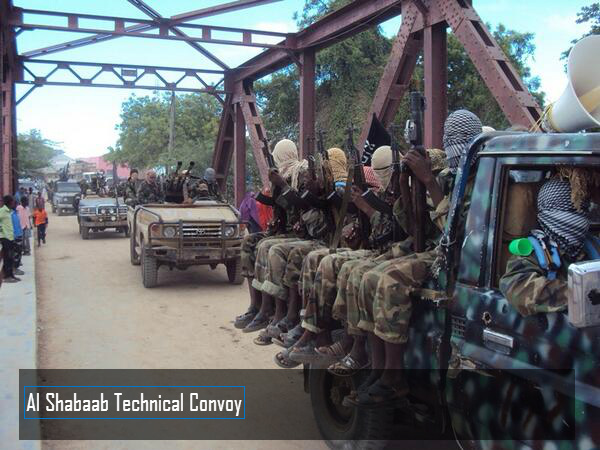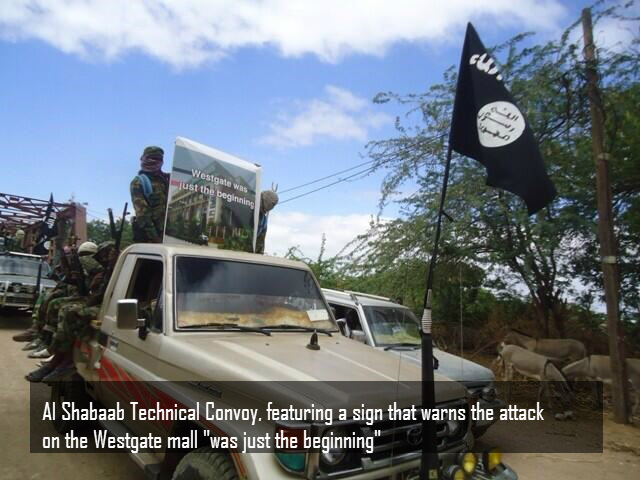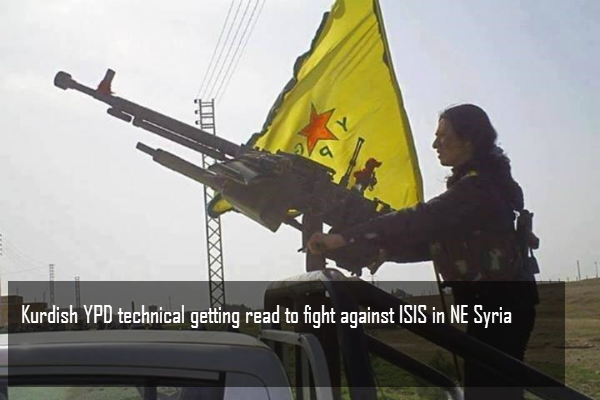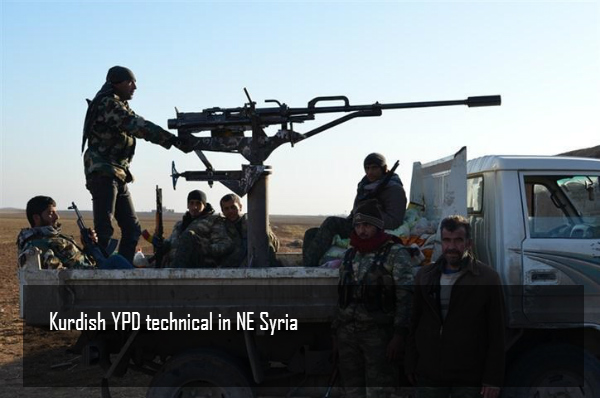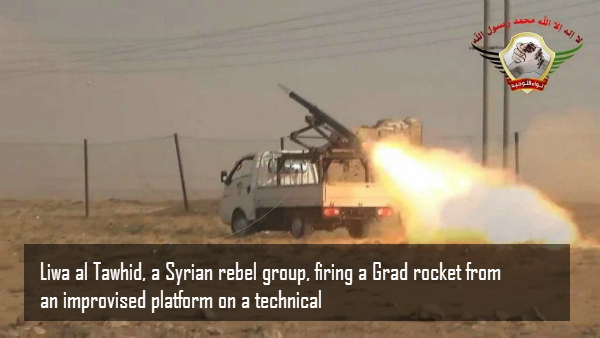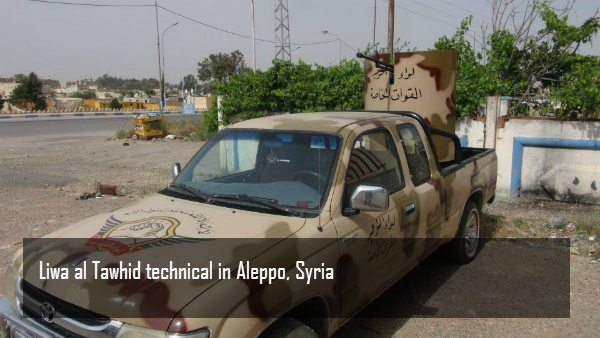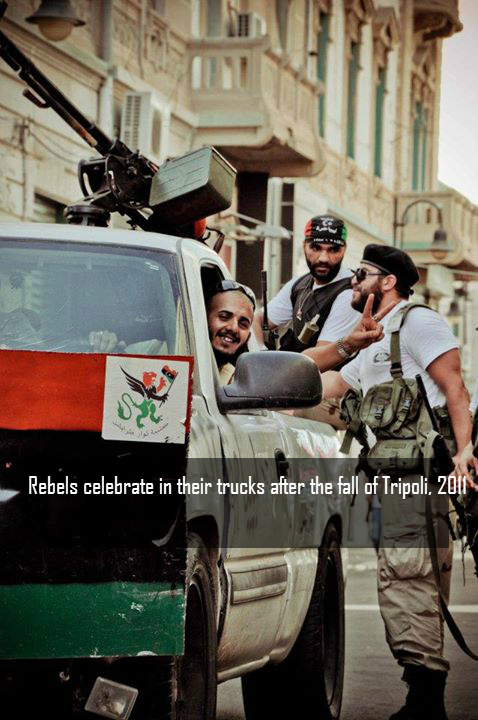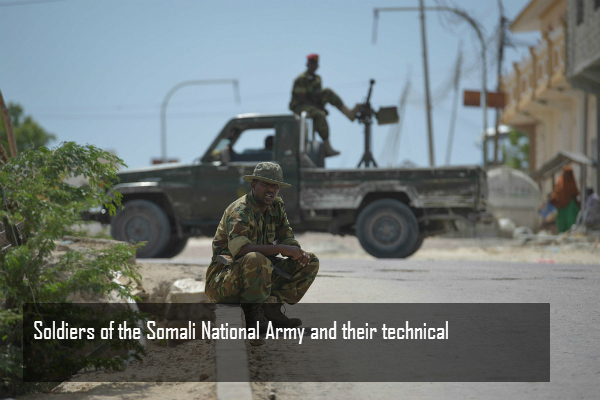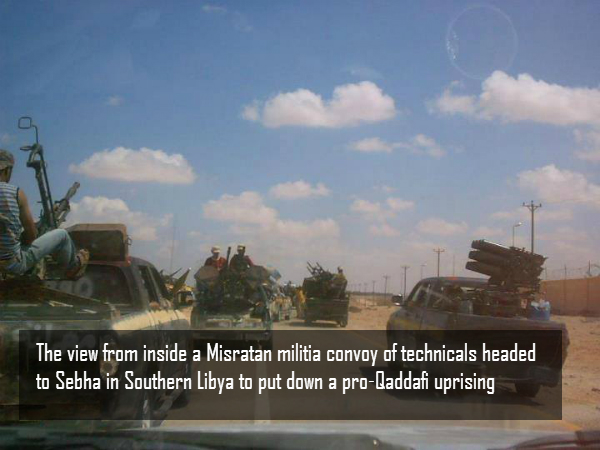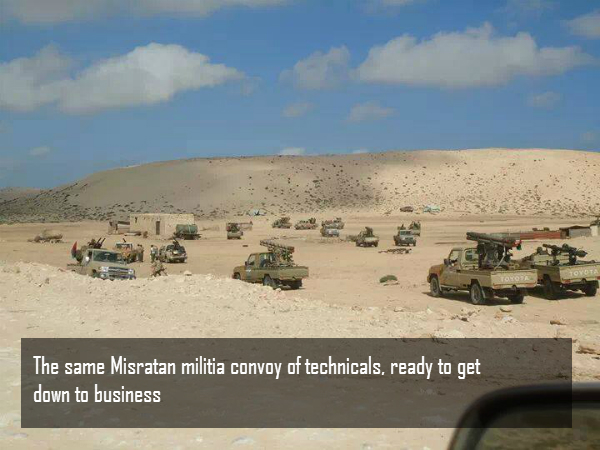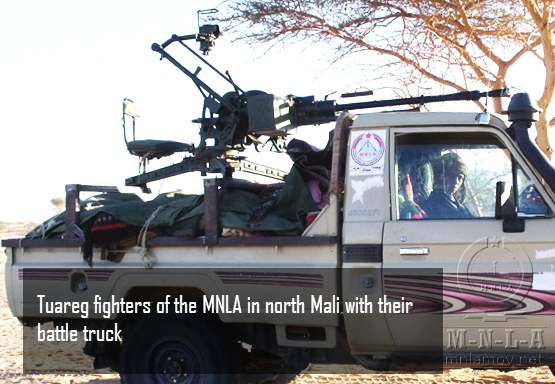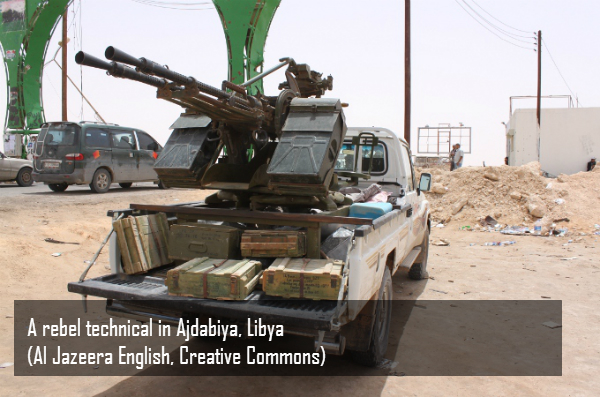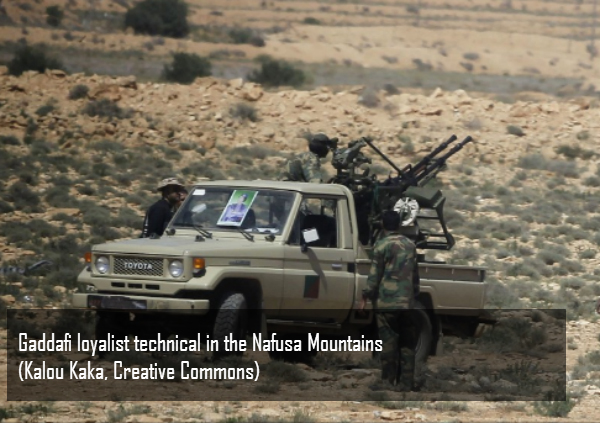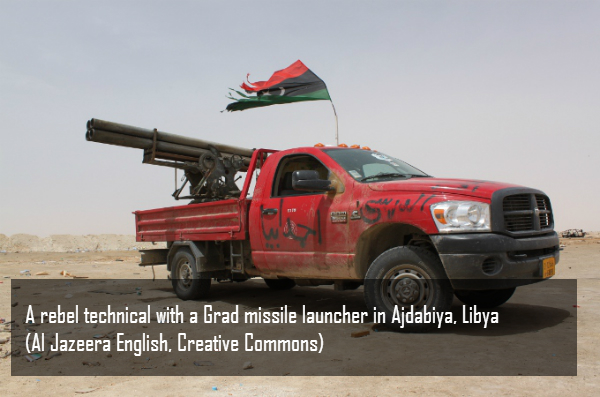The Pickup Truck Era of Warfare
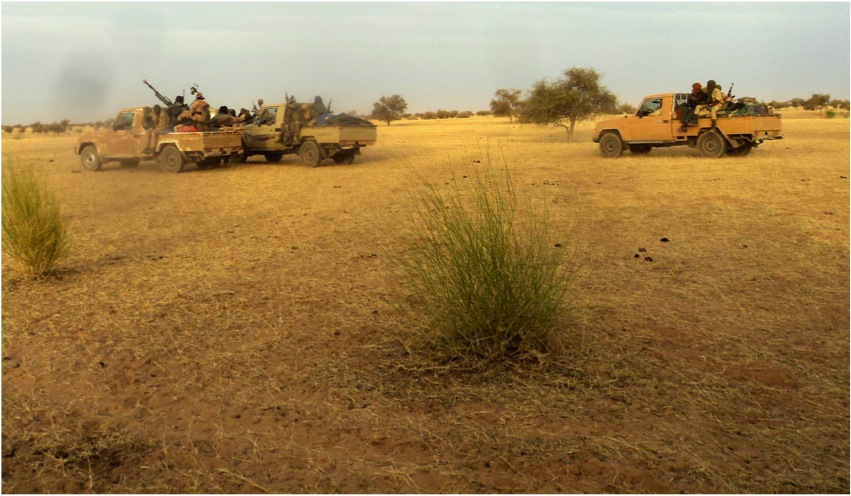
Readers, let’s take a moment to salute a true workhorse. In the world of war machines, the expensive and high-tech items get all the attention and budget—drones, anti-ship ballistic missiles, cyber warfare, and the like. But, on the battlefields of the twenty-first century, a humble and under-rated weapon has quietly showed up these expensive attention-hogs: the pickup truck.
Today, primarily irregular, infantry-centric forces fight almost every conflict in the world. Pickup trucks are their mainstays. In Afghanistan, Sudan, Somalia, Iraq, Mexico, Syria, Libya, Mali and the Central African Republic, irregulars reach the battlefield more often than not in the cabs and beds of Toyota Hi-Luxes and Land Cruisers, Ford Rangers, and Mitsubishi L200s. When they arrive, the same pickups are often carrying the crew-served weapons that offer that allow a light force to pack a punch on the cheap. Pickup trucks are ideal for the wars of the twenty-first century: they’re readily available, cheap, fuel efficient, easy to operate and repair. And, they are more modular than the Littoral Combat Ship. They can operate off-road in the bush or in the downtown of a major metropolis. All of these characteristics make the pickup truck a war-winner for non-state or weak-state forces that can’t get their hands on purpose-built military vehicles, can’t afford extensive logistic chains, and need to quickly move through and between rough terrain and urban environments.
The “technical” (light truck mounted with weapons) was born in the Sahara and won its greatest glory there. The history of the technical goes back to the exploits of the Long Range Desert Group in the Second World War. But, the pickup-truck era of warfare really began on March 22, 1987, when 2,000 Chadian soldiers riding in technicals armed with heavy machine guns, AA guns, MILAN anti-tank missiles and recoilless rifles emerged from desert wadis in the depths of the Sahara and overran the massive Libyan air base at Wadi Doum, Chad in a surprise attack that killed thousands of Libyans, destroyed dozens of tanks and aircraft, and shattered Libyan air power. The Chadians would go on to repeat their success several months later with an attack against the Libyan airbase at Maaten al-Sara, in Libya itself. Again, thousands of fighters in armed pickups crossed the desert to hit with speed and surprise. Libya agreed to a cease-fire six days after Maaten al-Sara fell, bringing the “Toyota War” (so named because Chadian forces were mainly composed of Toyota trucks) to an end. The Chadians had defeated a larger and far better armed Libyan force, holding a well-fortified position, and they couldn’t have done it without their trucks.
The speedy all-terrain mobility of the Chadian technicals allowed them to cross the Sahara into Libya undetected, masking their approach by following wadis and dunes. The trucks could carry the heavy weapons necessary to destroy Libyan armor and suppress Libyan positions at long range, unlike infantry or camels. Chadian drivers even discovered that their trucks could drive over anti-tank mines without detonating them, as long as they drove faster than 100 km/h. The Chadians are still masters of technical warfare; convoys of Toyota Land Cruisers carrying Chadian mercenaries led the Seleka alliance’s charge into Bangui, pushed back a South African infantry company and overthrew President Francois Boizize last March in the Central African Republic.
No history of the pickup-truck era of warfare would be complete without mentioning the Somalis. The term “technical” originated in Somalia: international NGOs would use “technical assistance grants” to hire and equip local guards, and “technical” quickly became the shorthand term for their armed trucks. Somali politics are clan-dominated, and the strength of a Somali clan is measured in how much livestock they own and how many technicals they can field. Muhammad Farah Adid, perhaps the most powerful single warlord to rise and fall since the collapse of Somalia, and victor of the 1993 Battle of Mogadishu against American Rangers, was carried to his grave in the back of one of his Toyota Land Cruiser pickups.
The wars of the Arab Spring have brought us into the golden age of the battle truck. Colonel Moammar Qaddafi probably thought that his truck problems had ended after his forces withdrew from Chad, but he would live to be tormented by Toyotas one final time. The Mad Max ingenuity of Libya’s rebel mechanics, born of desperation during the country’s 2011 civil war, surpassed anything that other pickup-warriors in Chad, Somalia, Lebanon and other hotspots had ever come up with. They quickly became the stuff of legend: the Chinese auto company that produced most of the rebellion’s trucks used Libyan technicals to advertise that their trucks were “stronger then war.” The Libyans weren’t the best soldiers, or the best tacticians, but they were the most innovative engineers. They attached armor plate-mated office chairs with ZPU AA guns, sawed off the roof to increase the arc of fire for the recoilless rifle in the bed. They produced hundreds of trucks armed with huge S-5 Soviet rocket pods, intended for aircraft. They even cut the turret off of a BMP-1 Soviet Armored Personnel Carrier and mounted it on the back of a Toyota.
Throughout the conflict, the revolutionary militias captured hundreds of tanks and APCs, but even in the war’s last battles, technical trucks provided the majority of rebel firepower and transport. The superior speed, mobility and fuel economy of the trucks more than compensated for their lack of armor and firepower compared to captured T-72 tanks and BMPs. The description of the rebellion’s final push from Zawiya into Tripoli in Irish-Libyan rebel Hussam Najjair’s memoir of the campaign highlights the unique assets of the pickups. The speed and fuel efficiency of the pickups let the rebel Tripoli Brigade cover ground so fast that disparate pro-Qaddafi units weren’t able to link up and support each other, and when the superior firepower of the government troops became too heavy, the pickups could quickly scatter off-road, duck down alleys, or make a speedy u-turn. At the moment, Libya’s militias are engaged in mopping up the last remnants of a simultaneous uprising and incursion over the border from Chad by former pro-Qaddafi fighters. Militiamen assembled in central Tripoli to make a show of strength before going south to put down the threat. What sort of vehicles were they parading in? You guessed it, Toyota Land Cruiser pickups.
The battle pickup continues to evolve. In Syria, rebel mechanics built this homemade tank with a remote-controlled machine gun operated by a PlayStation controller onto the frame of a truck. As long as great-power rivalries stay suppressed and large-scale conventional warfare is rare, the pickup-truck era of warfare will continue. The pickup-truck era is an era of small wars, often fought in marginal places by weak states or forces with no state to back them. Winning strategies and forces in the pickup-truck era of warfare should share the characteristics that have made the light truck a successful weapon. A winning strategy should involve a light resource footprint and it should be easy to implement with irregular, semi-professional light troops. It should be applicable to urban and rural areas because the forces of the pickup truck era freely cross the border between both. It’s easy to forget the strategic lessons that the pickup truck can teach us because they’re not very glamorous. But, for me, a convoy of swaggering militiamen speeding down the road in the bed of their modded Toyota Hi-Luxes is the modern version of a line of medieval knights charging at full gallop.
Jack Mulcaire is a contributor to War on the Rocks. During the 2011 Libyan Civil War, he helped lead a group of international volunteers that aided and consulted with local rebel councils and units.
Photo credit: Magharebia


